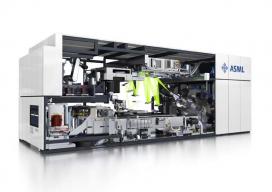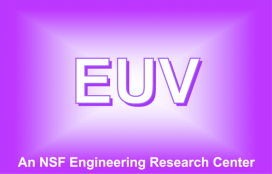EUV ERC Industry Partner Achieves Milestone in EUV Lithography
The goal of the National Science Foundation (NSF)’s graduated Extreme Ultraviolet (EUV) Engineering Research Center (ERC), based at Colorado State University, has been to advance the technology of small-scale and cost-effective coherent extreme ultraviolet (EUV) sources for use in applications such as nano-fabrication of semiconductors. A major barrier to the adoption of EUV lithography by the semiconductor industry was the need to develop 250 watt EUV lithography sources. Recently, Cymer, an EUV ERC industry member, announced the commercial availability of the first 250 watt EUV source, a milestone they achieved using EUV ERC-developed technology.
Silicon chip manufacturers have long believed that a source power of 250 watts would be required to achieve a throughput of 125 wafers per hour (WPH). The lithography vendor ASML and Cymer (which ASML acquired in 2013) had been trying in recent years to push the technology to hit that mark—which has been considered the primary roadblock for EUV development in recent years. At the July 2017 Semicon West tradeshow, ASML announced that they can now claim this long-elusive milestone. EUV—when it achieves its 125 WPH throughput target—offers an economic benefit compared to the high cost of conventional triple- or quadruple-patterning using immersion lithography tools.
Source power—a measurement of the amount of EUV photons delivered to the scanner to enable wafer exposure—relates directly to productivity. The 250 watt source power milestone represents an improvement of 10-fold over the past five years, from about 25 watts in 2012. Leading chipmakers including Intel and Samsung are planning to insert EUV into high-volume production sometime in the next two years. ASML said the source that has demonstrated 250 watts has not yet shipped, but ASML has a large backlog of EUV systems awaiting delivery, the majority of which are reportedly slated for Intel.
The semiconductor industry was originally hoping to use EUV in production early this decade, but development slipped continually. By some estimates, the industry has spent more than $20 billion on the development of EUV. An ASML executive said that the company demonstrated 250 watts consistently by understanding the conversion efficiency in the source and putting the right controls in place.
Collaboration between Cymer and EUV ERC researchers made the advancement possible; and it continues. NSF’s Engineering Education and Centers Division and the Industrial Innovation and Partnerships Division recently jointly funded a Partnerships for Innovation project that is a collaboration between Colorado State University and the EUV ERC team and Cymer. The proposal was titled “Pulse Shaping for Increased Conversion Efficiency in Extreme Ultraviolet Lithography Sources for the Fabrication of Next Generation Integrated Circuits.”



